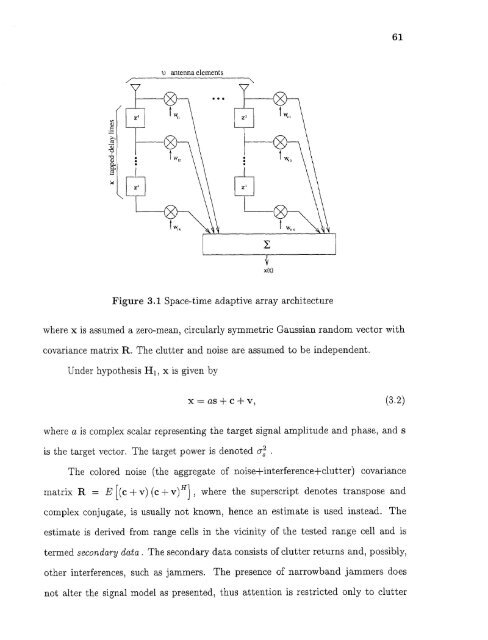Space/time/frequency methods in adaptive radar - New Jersey ...
Space/time/frequency methods in adaptive radar - New Jersey ...
Space/time/frequency methods in adaptive radar - New Jersey ...
Create successful ePaper yourself
Turn your PDF publications into a flip-book with our unique Google optimized e-Paper software.
61Figure 3.1 <strong>Space</strong>-<strong>time</strong> <strong>adaptive</strong> array architecturewhere x is assumed a zero-mean, circularly symmetric Gaussian random vector withcovariance matrix R. The clutter and noise are assumed to be <strong>in</strong>dependent.Under hypothesis H 1 , x is given bywhere a is complex scalar represent<strong>in</strong>g the target signal amplitude and phase, and sis the target vector. The target power is denotedThe colored noise (the aggregate of noise+<strong>in</strong>terference+clutter) covariancewhere the superscript denotes transpose andcomplex conjugate, is usually not known, hence an estimate is used <strong>in</strong>stead. Theestimate is derived from range cells <strong>in</strong> the vic<strong>in</strong>ity of the tested range cell and istermed secondary data . The secondary data consists of clutter returns and, possibly,other <strong>in</strong>terferences, such as jammers. The presence of narrowband jammers doesnot alter the signal model as presented, thus attention is restricted only to clutter
















